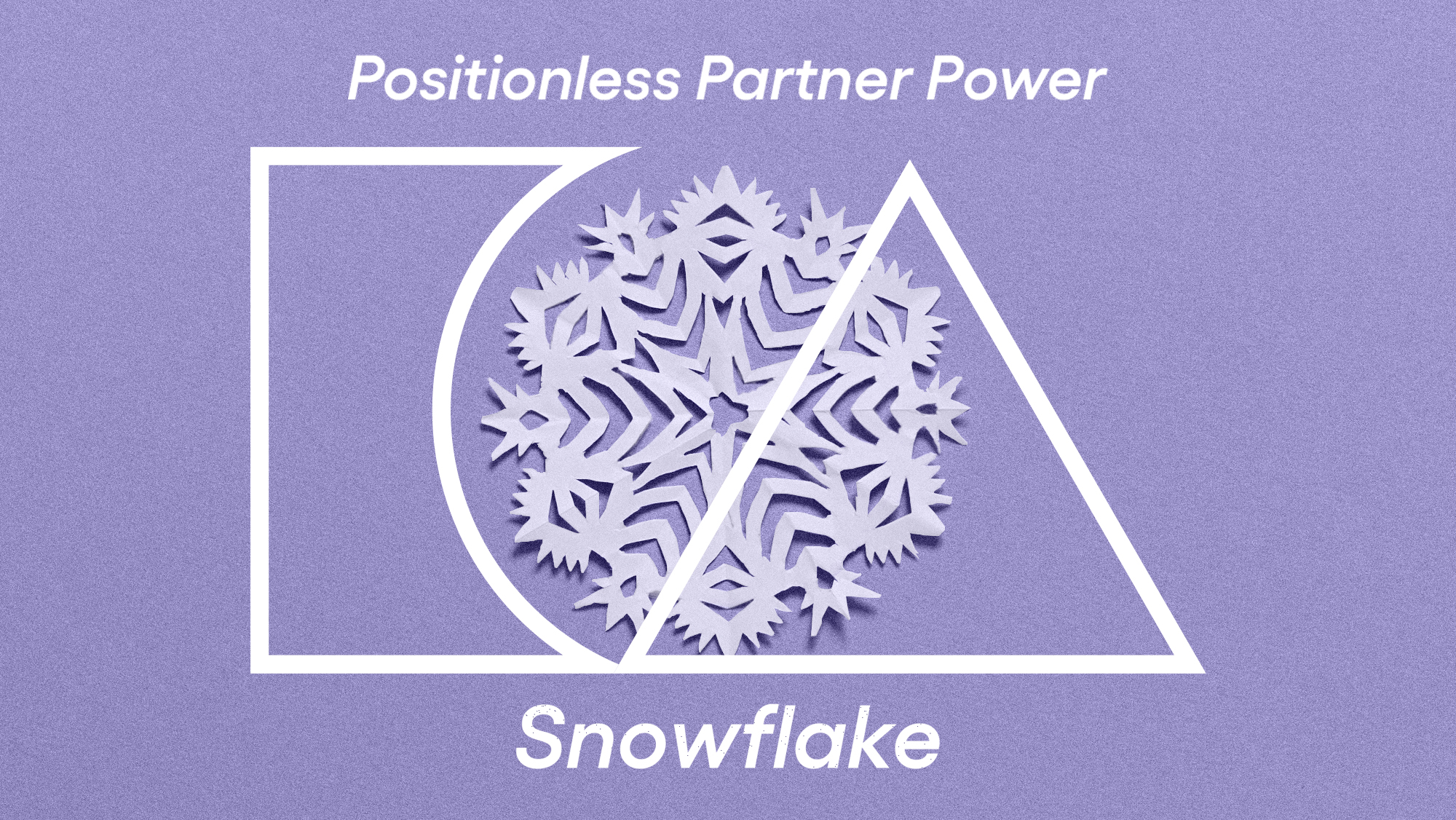What it is
Perplexity AI is a conversational search engine launched in 2022 with the ambition of redefining how people access and verify information. Instead of sending users through pages of results, as Google search does, it blends traditional search with the reasoning power of AI, offering clear answers backed by verifiable sources.
Its mission is to help anyone, from students and journalists to analysts and marketers, find accurate information, and guide them through the searching process. Every response, even in the free version, is accompanied by the link to sources and real-time web access, allowing fact-checking and ensuring up-to-date information access, something particularly valuable for fast-moving topics like technology, finance, or news.
With Perplexity, Students, founders, marketers, and journalists can be Positionless by using it to research, verify facts, and gather insights without needing advanced research or data analysis skills.
The platform also supports conversational refinement without losing context, making research feel more like an evolving dialogue than a one-off query. Features like Copilot (a guided research assistant) and Collections (for saving and organizing findings) turn Perplexity into a knowledge workspace and help marketers to be increasingly Positionless by giving them the power to skip the assembly line and get relevant information without waiting for the research partner.
While both free and paid Perplexity versions provide structured, factual responses, using a mix of advanced AI models for that (GPT-4, Claude, proprietary models, and others), only the paid Pro and Max versions support file uploads, image generation, longer context memory, and priority usage limits.
Uses and features of Perplexity
Have a clearer idea of how people use Perplexity, which features are available, where it’s most valuable, and how it works in practice:
- Real-time Search & Answering: Perplexity combines conversational AI with live retrieval from the web, meaning that when you ask a question, it looks across news, websites, forums, and more to generate an answer with up-to-date evidence.
- Source Transparency / Citations: Each answer includes links to the original sources, so users can verify claims directly.
- Conversational Refinement / Follow-up Questions: allows asking for clarifications, pivoting topics, or digging deeper without losing context.
- Model Selector (for Pro users): In paid tiers, users can choose which underlying model (e.g. GPT-4, Claude, or others) to use for a particular query for more flexibility over style, depth, or costs.
- Focus & Related Features: These tools refine searches more precisely. Focus lets users restrict the domain (e.g. only academic journals, news, blogs), and Related suggests follow-up angles to explore.
- Tasks, Collections, File Uploads (in paid plans): Users with premium access can schedule alerts or recurring topic checks (Tasks), organize research into Collections, or upload documents (PDFs, Word, etc.) to combine web + internal data insights.
- Spaces: A collaborative environment where users can publish curated research threads, share insights, or follow others’ topic explorations — turning individual queries into ongoing public discussions.
- Discovery: A tool within Perplexity that surfaces trending questions, topics, and searches from the community, allowing users to explore what others are researching and gain inspiration from ongoing discussions.
- Comet Browser Integration: The Comet browser (by Perplexity) integrates the search engine into the browsing experience, allowing AI assistance directly while browsing sites. (Recently, this browser was made broadly available.)
Try this prompt out to...
...use Perplexity as your research partner!
"You are a researcher interested in [INSERT AREA]. Your task is to conduct an in depth, comparative analysis based on reliable sources about:
[DESCRIBE HERE THE MAIN TOPIC OR RESEARCH QUESTION]
Please follow the instructions below:
- Consider the following context:
[INSERT DETAILED CONTEXT – audience, objective, time frame, reasons for the research]
Common mistakes made and limitations
It’s important to understand where Perplexity can mislead, underdeliver, or be misused:
- Assuming all answers are always accurate: Because it synthesizes from multiple sources, it can sometimes produce errors, mixing sources, or “hallucinations”, including "inventing" web links.
- Over-relying on low-quality sources: despite having its own way of ranking the sources, some questions or themes may lead to few, poor, or unreliable sources, which is not ideal when users need strong data or are fact-checking.
- Using it for niche, highly specialized, or emerging topics: On very obscure or new topics, Perplexity may struggle to find solid reference material, leading to weaker answers.
- Expecting strong creative nuance, emotional or cultural insights: It’s not inherently creative or empathetic. While it can mimic tone, it can’t truly interpret context or emotional/cultural nuances.
- Treating Perplexity as a scraper or data extraction engine: Trying to use it as a substitute for structured data scraping or large-scale automated extraction is prone to errors and lacks control over source selection.
- Language limitations: although Perplexity page can be translated to several idioms, the interactions with the tool deliver better results when done in English.
Tips to avoid common mistakes
Here are some guardrails and best practices you can adopt to get solid value from Perplexity while avoiding common pitfalls:
- Cross-check the sources: Always click the cited links and verify if the answer matches the source. Don’t accept claims blindly.
- Prompt with specificity and constraints: Give Perplexity context (time, domain, audience) to guide it more precisely (e.g. “as of 2025” or “in the domain of renewable energy.”)
- Use “Focus” mode when possible: Narrow the search to trustworthy domains (academic journals, established news outlets) to reduce noise.
- Complement search for niche or technical topics: In those cases, complement your research with domain-specific databases, journals, or expert consults.
- Use a dedicated scraping or API tool to extract structured data.
- Complement your work with other AI tools, such as ChatGPT or Claude, to get more creative nuances and outputs.
When should non-experts call experts?
Even though Perplexity makes information more accessible, there are moments when a subject-matter expert is still essential. Below are conditions under which non-experts should seek a specialist rather than trust only Perplexity’s output.
- When you need an in-depth, complex, polished report, a professional researcher is needed.
- When outcomes carry serious liability or risk, or are highly technical, rely on qualified experts to interpret or validate information.
- When data seems too ambiguous, bring in human oversight from experts on the topic.
Notes on pricing
Perplexity is a freemium tool with different plans designed for individuals, teachers, medium sized businesses, and large enterprises. The free plan gives access to the most essential functionalities, but to use advanced research and organizing features, subscribe to Personal, Education, or Enterprise plans here.
Optimove’s Positionless Marketing Platform, combined with Perplexity AI, empowers marketers to move beyond the traditional dependency chain of research, insights, and execution. While Optimove unifies customer data, automates segmentation, and personalizes campaigns across channels, Perplexity is an intelligent research partner, instantly sourcing verified insights, competitive context, and audience trends. Together, they allow marketers to skip the bottom lines, making them more self-sufficient, data-informed, and assertive in their decision-making. The result is a Positionless professional and a workflow where creative and strategic thinking happen in real time, supported by evidence and automation, without waiting for intermediaries.



